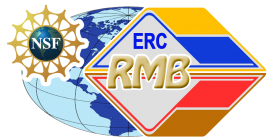New Strategy Increases Industry Engagement in Moving Biomedical Research to the Market
Moving innovation out of the lab and into the hands of people who can use it is the ultimate goal of research, but getting to this stage requires strong connections between researchers and industry. Faced with declining industry engagement, the NSF-funded Engineering Research Center (ERC) for Revolutionizing Metallic Biomaterials (RMB), headquartered at North Carolina A&T University, examined the specific needs of the biomedical technology industry and developed a new, more tailored approach to increase and enhance opportunities for industry engagement. It is working.
While the ERC-RMB had consistently worked to gain and retain strong ties with industry, when industry participation dropped off, they took a hard look and learned that the standard ERC best practices they had been using were not a perfect fit for the business realities of the biomedical technology sector. After thorough, collaborative study, ERC-RMB revised their member agreement to reflect industry-specific priorities for fostering relationships, building trust, and providing value for industry participants that helps them further engage ERC researchers. The agreement provides a mechanism for faculty to demonstrate scientific excellence and the ability to deliver at low risk to the prospective partner.
Revisions to the member agreement were approved by all parties in 2014 and the partnering approach to industry has been well received thus far. Of note is that the pool of interested parties now includes major players in the medical device space, with more indicating that they may join in the near future. Key attractions noted by these companies include an industry friendly approach to intellectual property (IP) that recognizes the need for exclusivity; a variety of pathways for engagement; and a reduced dues structure that allows for subsequent financial contributions to be put to work for the member.
Moving biomedical products to market is a time-consuming and costly process, with a significant amount of technical and regulatory risk. The role of academia in biomedical research is often to reduce technical risk to the point where an innovator company can garner financial support to conduct early prototype testing in animal models, with the aim of further reducing risk so large commercial partners are comfortable in investing in the product opportunity. This can occur as early as clinical testing, but often does not happen until after first regulatory approval, such as a CE Mark. In this process, the needs of many customers must be considered, including third party payers, regulators, patients, clinicians, medical device companies, and innovator companies. While the ERC must be sensitive to the needs of all stakeholders, they learned to better distinguish the needs of innovator companies, which are typically cash-poor but able to collaborate via sharing of experiences and resources, and those of larger companies, which may be more interested in relationships with research faculty and students than in technology that is too risky for them to invest in.


